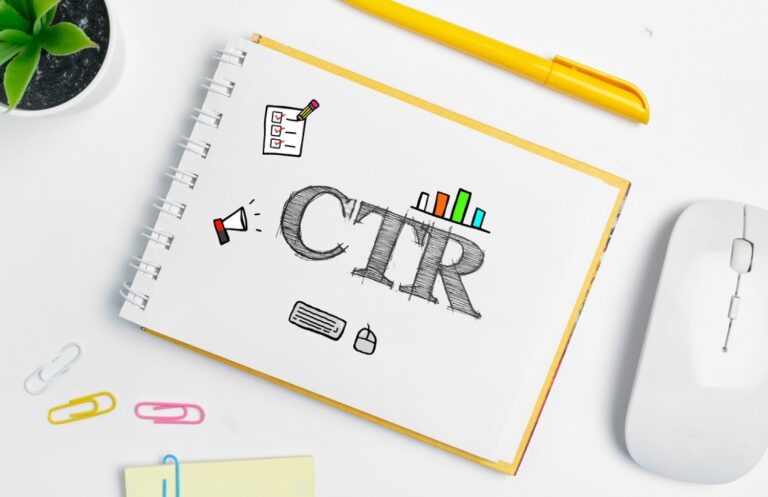What Is ROI (Return on Investment)
Return on Investment (ROI) is a financial metric that measures the profitability of an investment. It’s a fundamental indicator used to evaluate the efficiency and success of various investments. ROI assesses the gain or loss generated on an investment relative to the initial amount invested.
Return on Investment (ROI) is like the yardstick for measuring the success of your investments – it tells you how much bang you’re getting for your buck. In simple terms, ROI is a way to figure out the profitability of an investment, comparing the gain or loss relative to the cost.
You take the net profit of an investment and divide it by the cost of the investment. Then, you multiply that by 100 to get the percentage. It’s a super handy metric because it helps you assess the efficiency of your investments – whether it’s in marketing campaigns, business expansions, or any venture.
In business, ROI is a game-changer. It helps in decision-making by giving a clear picture of where your money’s working hardest and where you might need to tweak things. It’s not just about the dollars; it’s about making smart choices that bring in the best returns. That’s why understanding ROI is crucial for businesses aiming to maximize their profitability and make informed investment decisions.
The Importance of ROI
Understanding the importance of ROI is crucial for making informed financial decisions. ROI matters for several reasons:
– Performance Evaluation: ROI provides a quantitative method for evaluating the performance of different investments. It enables you to compare the returns on various assets or projects.
– Resource Allocation: In business, you often have limited resources. ROI helps in allocating these resources effectively, prioritizing investments with the highest potential for returns.
– Risk Assessment: ROI helps in assessing the risk associated with an investment. Positive ROI indicates profitability, while negative ROI implies a loss. It’s a vital tool for risk management.
– Goal Alignment: ROI ensures that investments are aligned with your financial goals. Whether it’s increasing revenue, reducing costs, or expanding market share, ROI keeps your investments on track.
How to Calculate ROI
The calculation of ROI is a straightforward process. You can use the following formula:
ROI = (Net Profit / Investment Cost) x 100
Here, “Net Profit” represents the total gain after deducting all costs, and “Investment Cost” includes the initial amount invested. The result is expressed as a percentage.
Regularly calculating ROI enables you to make data-driven decisions and prioritize investments that offer the best potential for profitability.
Strategies to Maximize ROI
Efficient Resource Allocation:
Prioritize High-ROI Areas:
Identify the channels, products, or services that historically yield the best returns. Conduct a thorough analysis of past campaigns or business segments to pinpoint where your investments have generated the highest ROI. This could involve assessing customer acquisition costs, conversion rates, or lifetime value of customers. Allocate a larger portion of your budget to these high-performing areas to capitalize on their potential for greater returns.
Optimize Budgets:
Regularly review and adjust budgets based on performance insights. Utilize data analytics tools to track the performance of different initiatives. Analyze key metrics such as cost per acquisition, conversion rates, or return on ad spend (ROAS). By optimizing budgets, you can redirect resources from less effective strategies or channels towards those generating higher returns. This dynamic reallocation ensures your investments are yielding the best possible outcomes.
Performance Tracking and Analysis:
Data-Driven Decision Making:
Leverage analytics tools to monitor and analyze performance metrics continually. Track key performance indicators (KPIs) related to conversions, sales, customer acquisition costs, and customer lifetime value. A data-driven approach helps in understanding what works and what doesn’t, enabling you to fine-tune strategies for better ROI.
A/B Testing and Experimentation:
Constantly experiment with variations in your campaigns, advertisements, or strategies. Implement A/B testing to compare different elements such as ad copies, visuals, CTAs, or landing pages. Analyze the results to identify trends, preferences, and optimal practices that drive higher engagement and conversions. This iterative approach ensures that you’re constantly refining your strategies based on empirical evidence.
Risk Management and Mitigation:
Diversification:
Spread your investments across different channels, markets, or products. Diversification minimizes the impact of potential losses in a particular area. By investing in multiple areas, you reduce dependency on a single source, mitigating risks associated with market volatility or changes in consumer behavior.
Contingency Planning:
Anticipate potential risks and have contingency plans in place. Create strategies to adapt to unforeseen market shifts, economic changes, or industry disruptions. Having contingency plans ensures you’re better equipped to navigate challenges and minimize the negative impact on your investments.
Implementing these strategies ensures that your resources are efficiently utilized, your decisions are data-driven, and you’re equipped to manage risks effectively, ultimately maximizing your ROI.
Measuring ROI for Success
ROI is a tool for measuring success in various aspects:
– Identify Profitable Ventures: By monitoring ROI, you can identify which ventures or investments are delivering the highest returns. This helps you reallocate resources to the most profitable areas.
– Data-Driven Decision-Making: ROI provides the data needed for informed decision-making. Whether it’s adjusting marketing strategies or diversifying investments, data-driven decisions are critical for success.
– Optimizing Efficiency: Use ROI to optimize efficiency by focusing on high-ROI initiatives and eliminating or improving low-ROI activities. This translates to cost savings and increased profitability.
– Clear Objective Setting: Align your business objectives with expected ROI. By setting clear financial goals and tracking ROI, you can measure your progress and ensure your investments contribute to your success.
ROI in Investment Portfolios
When it comes to investment portfolios, ROI plays a pivotal role. Investors frequently evaluate the performance of their investments by measuring ROI. Diversification, a strategy that spreads investments across various asset classes, is utilized to balance risk and maximize returns. By tracking the ROI of individual investments within a portfolio, investors can fine-tune their strategies, making adjustments based on the performance of each asset.
ROI in Real Estate
Real estate is a significant area where ROI holds substantial importance. When considering real estate investments, individuals and businesses analyze the potential return on investment meticulously. Factors such as location, property type, market trends, and projected rental income all contribute to ROI calculations. It’s not just about property acquisition but also how well it aligns with financial goals and profitability expectations.
ROI in Marketing Campaigns
In the realm of marketing, ROI serves as a critical metric. Companies track ROI to assess the effectiveness of marketing campaigns. Various marketing channels like online advertising, email marketing, and social media promotion are evaluated for their contribution to ROI. This data-driven approach allows businesses to allocate their marketing budget more efficiently, focusing on channels that yield the highest ROI.
The Role of ROI in Personal Finances
On a personal level, ROI is not limited to businesses and investments. It’s also relevant to personal financial decisions. Individuals assess the ROI of financial choices such as saving accounts, investment accounts, and even education. By calculating the potential returns on these decisions, people make informed choices that align with their long-term financial goals.
The Future of ROI Analysis
As technology continues to evolve, ROI analysis methods also advance. Businesses now have access to powerful data analytics tools and AI-driven solutions that can provide deeper insights into ROI. Predictive analytics can forecast potential ROI more accurately, while real-time tracking enables swift adjustments to strategies. The future of ROI analysis promises even more precision and agility in decision-making.
Wrap Up
Return on Investment (ROI) is the ultimate measure of success in business and finance. It’s not just a financial metric; it’s a compass guiding your decisions and investments. By understanding the significance of ROI, calculating it accurately, and implementing strategies to maximize it, you can navigate the complex world of business with confidence. ROI is the key to achieving your financial goals, making informed decisions, and ensuring that every investment contributes to your success.
ROI, as the ultimate measure of success, permeates various aspects of business, finance, and personal life. Understanding its importance, calculating it diligently, and using data-driven insights to maximize it are the keys to achieving financial goals and informed decision-making. Whether you’re managing investments, analyzing marketing campaigns, or planning for your financial future, ROI is the compass that guides you to success. Embracing ROI as a fundamental metric ensures that every step you take is a step towards greater profitability and prosperity.
FAQs
What does ROI measure?
ROI measures the profitability or performance of an investment relative to its cost. It provides insight into the efficiency of an investment in generating returns.
Why is ROI important in business?
ROI helps businesses assess the effectiveness of investments, guiding decision-making by identifying which initiatives yield the highest returns and where to allocate resources.
How is ROI calculated?
The ROI formula is (Net Profit / Cost of Investment) × 100. Net profit is the revenue minus expenses, and the result is expressed as a percentage.
What factors affect ROI?
Factors influencing ROI include the investment’s timeframe, associated risks, market conditions, resource allocation, and the accuracy of data used in calculations.
Can ROI be negative, and what does it imply?
Yes, ROI can be negative, indicating that the investment resulted in a loss. A negative ROI suggests that the investment failed to generate profits, prompting a reevaluation of strategy or investment choices







